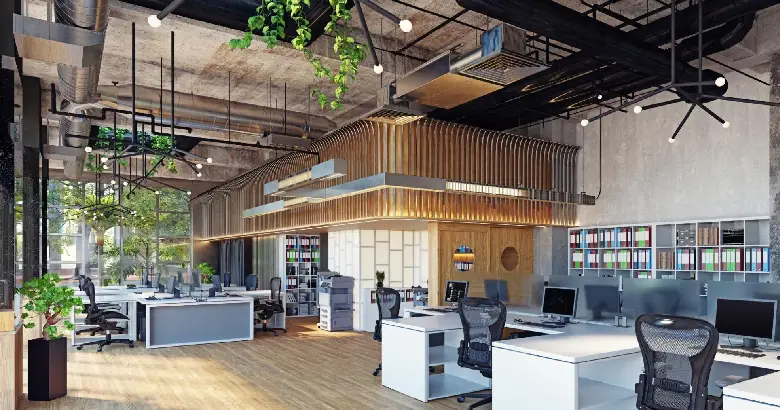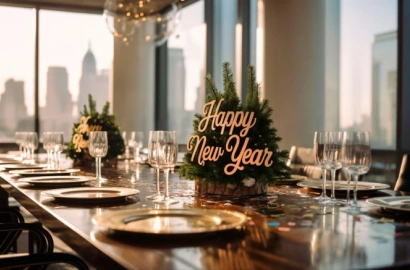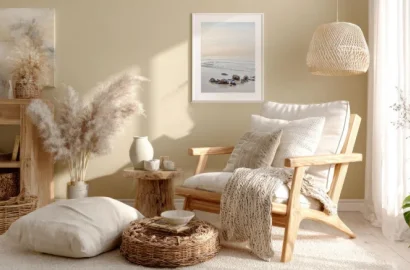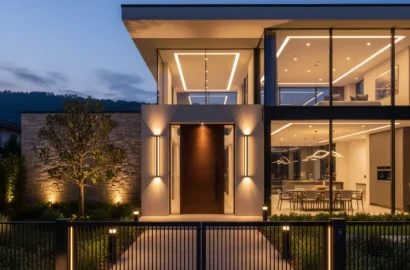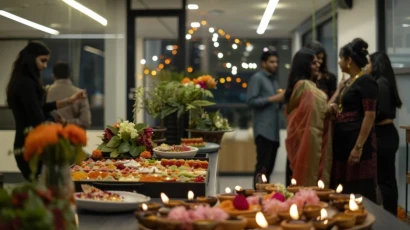Commercial interior design revolves around two principles – ‘purpose’ and ‘experience’. How…? Read along to find out!
In the most fundamental sense, all commercial spaces are designed to either create value or sell it in the form of a product or a service. For instance, Apple sells tech, Coca-Cola sells beverages as products, and Pentagram and McKinsey sell their knowledge and expertise as services. They do it through spaces purposefully built and following commercial design principles. But how does one design such a place? What is the method to follow? Why even call it commercial interior design?
In this comprehensive guide, we answer these questions and discuss commercial interior design in great detail. Read along.
Here is a list of the topics we cover!
- What Is Commercial Interior Design?
- Key Elements of Commercial Interior Design
- The Commercial Interior Design Process
- Popular Commercial Interior Design Styles
- Common Challenges and Solutions
- Future Trends in Commercial Interior Design
- Final Thoughts
- FAQs
What Is Commercial Interior Design?
Commercial interior design is a style of interior design created for spaces where value is made or sold, i.e. commercial spaces. If you search ‘commercial interior design’ on Pinterest, you’ll find images of offices, meeting rooms, studios, restaurants, hotels, merchandise stores, etc. These spaces are broadly divided into two categories –corporate and retail. So, offices and studios fall into corporate, and restaurants and stores fall into the retail category. Based on this classification, we get a firm idea of what commercial spaces are, and the way their design looks.
We can take a step further in order to understand what corporate and retail spaces essentially mean. Corporate and Retail can be refined into spaces that primarily focus on ‘Purpose’ and ‘Experience’ respectively. Corporate organizations have offices, meeting rooms, workstations, and large halls, as part of usable space that facilitate work involving several members needed for the accomplishment of a certain goal and serving a common purpose – for instance, improving sales, KPIs, etc. Similarly, retail spaces have areas designed for seating, serving, viewing, shopping, and socializing where consumers arrive and experience the product or service that the space offers – shopping, dining, etc.
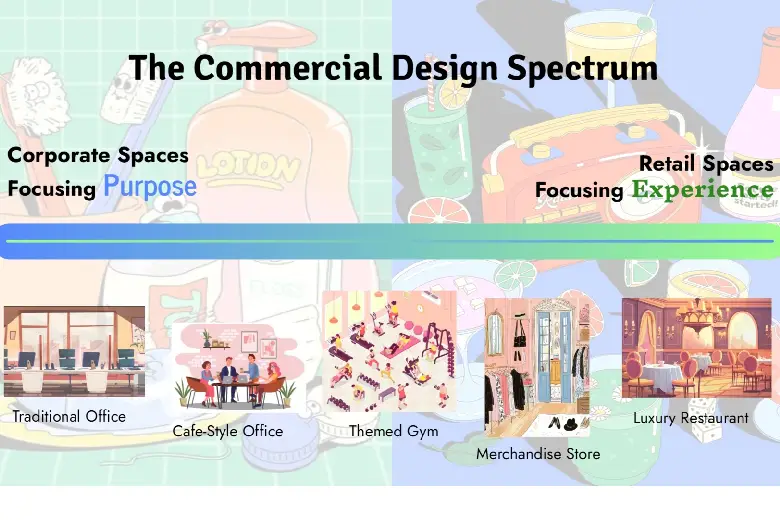
It is not like offices have nothing to do with providing an experience or restaurants have no purpose. They both adhere to the purpose and experience principles; offices still want their spaces to feel welcoming, and shops still need to operate efficiently. It is just that each model favors one over the other.
Another special thing about commercial interior design is that it doesn’t follow a single fixed style or a universal set of rules. Instead, it stretches and adapts itself depending on the context of the space, which makes its application incredibly broad and, at times, unpredictable. Unlike residential interior design, which usually has some standard principles ( comfort, storytelling, or expression), commercial interior design shifts to meet the specific needs of a business. Two commercial spaces serving different industries might look and feel nothing alike, and that is by design.
For example, a luxury fashion boutique and a tech startup office are both commercial interiors. However, one might be designed with velvet seating, golden lighting, and glass shelving to signal luxury and premium. The other might have bean bags, exposed ceilings, neon signs, and writable walls to stimulate creativity. The designer is designing around what that business needs, who the people are, the kind of mood the space should create, and how the space may help the business run better.
This inconsistency is actually one of the strengths of commercial interior design. It gives room for creative problem-solving and experimentation. Different spaces ask for different emotional responses and practical functions. Commercial interior design has to stretch to meet those expectations, in terms of layout, use of materials, color schemes, and lighting, among others.
Elements of Commercial Interior Design
Commercial spaces are designed with a number of constraints and outcomes in mind. After all, it is about running a business and making a profit. Certain elements of commercial design play an important role in making this happen.
1. Functionality
No matter how beautiful a space looks, if it doesn’t work efficiently for the people using it, it fails its purpose. Functionality means that the space supports the daily operations of a business without causing any problems. For instance, a clinic must be easy to navigate for both staff and patients, and a restaurant must allow for quick movement between the kitchen and dining area.
2. Space Usage
A very important aspect of commercial interior design is organizing space so that different zones serve their purpose without wasting valuable real estate. A well-planned layout considers how many people will be in the space at any given time, how they will move through it, and what activities will take place inside it. For example, a retail store might have a flow that leads customers from the entrance along displays toward the checkout, while a commercial office interior design might include private workspaces and open meeting areas.
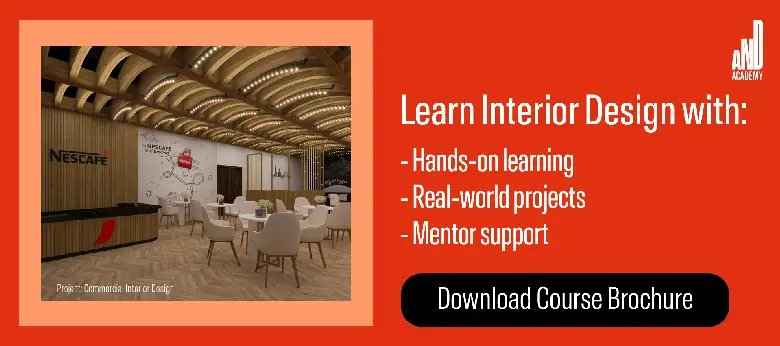
3. Brand Identity
Organizations and spaces behave much like humans and have their unique identities. Good design communicates the brand’s character the moment someone walks in. Everything from the color scheme and materials to the lighting and furniture can tell a story about the brand’s personality and values. A tech company might use clean lines, white walls, and open layouts to signal innovation, while, a chocolate shop could use wood textures, and vintage lighting to communicate coziness and tradition.
4. Durable Materials
Commercial spaces go through far more wear and tear than residential ones. That is why the durability of the materials and furniture used is important. A restaurant might get hundreds of guests a day, or an office might see foot traffic around the clock. The materials chosen for floors, furniture, countertops, walls, fabrics, etc must be tough enough to withstand heavy use without losing their appearance or functionality.
5. Lighting
In commercial spaces where there are tasks that need to be accomplished, attention becomes a function of lighting. Lighting can influence mood, affect energy levels, guide movement, and decide how products are perceived. In an office, good lighting can help reduce eye strain. In a retail space, focused lighting on a display can draw attention to high-value items. A warm, soft light can make a restaurant feel cozy, while a bright light might work better for a clinic or coworking space.
6. Technology
Modern business cannot exist outside of technology, and so, in modern commercial interiors, tech is baked into the design from the start. Offices need integration of screens, projectors, outlets, and Wi-Fi hubs. Retail stores even use interactive kiosks, mobile checkout systems, or LED screens. Restaurants nowadays make ample use of digital ordering and smart lighting.
7. Systems and Protocols
Behind every commercial space are invisible systems that keep everything running. These include HVAC systems, emergency exits, security setups, fire safety plans, and sanitation protocols. In spaces like hospitals, gyms, hotels, or restaurants, these systems are non-negotiable. The design must make room for them to function properly without disrupting the user experience. For instance, a restaurant kitchen is legally obliged to follow health codes, so the design must allow for easy cleaning and storage.
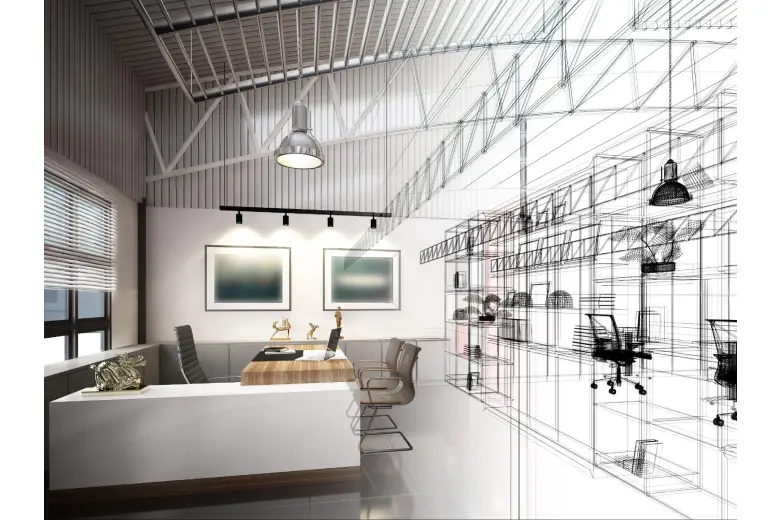
The Commercial Interior Design Process
Designing a commercial interior begins way before any construction starts and continues well after the space is in use. Since commercial interiors are created to support a business the design process must be creative and strategic.
1. Understanding the Client and the Business
The first step is getting to know the client and their business inside out. This is the part of the process where you, as a designer, are supposed to ask all the right questions from the client in order to understand the context of the problem at hand. What kind of space is it? Who will use it? What will they feel when they use it? What set of behaviors are desired? These questions help lay the foundational understanding of the design challenge.
2. Research and Site Analysis
After the first few conversations, you have to go into research mode. This includes studying the location- its size, layout, light sources, limitations, and strengths. Take detailed measurements and photographs of the space and assess any structural elements that need to be considered, like walls, windows, electrical panels, and HVAC systems. If there are existing problems (poor lighting, skewed layouts, or limited accessibility), they must be solved at the design stage.
3. Concept Development
Once there’s enough information, you can begin the ‘design thinking’ process. This is the creative phase where ideas begin to form. You may create mood boards, visual collections of images, textures, colors, and symbols that represent the feeling and look the space should have. However, the concept is not just limited to aesthetics; but also includes zoning (how space will be divided), circulation (how people move through the space), and user experience. This is presented to the client for feedback.
4. Design Planning and Documentation
After the concept is approved, technical work begins. Detailed plans for floor layouts, furniture arrangements, lighting plans, material specifications, and more are created. These drawings guide the construction team and include all the necessary measurements, materials, and instructions to construct the design. This stage also involves budgeting.
5. Execution and Project Management
Once the plan is finalized, contractors, carpenters, electricians, and other professionals begin the actual build. You have to work closely with them during this stage to make sure that everything is built according to the plan. Check finishes, resolve on-site issues, and make small adjustments if needed. It’s a very hands-on part of the process that requires problem-solving and close attention to detail. Almost like fieldwork.
6. Final Styling and Handover
When construction is complete, you have to show it off by arranging the furniture, adjusting lighting, placing decor, and making sure every detail aligns with the original vision. Finally, the space is handed over to the client, and ready for use.
Popular Commercial Interior Design Styles
Over the years, several styles have emerged as go-to choices for different types of businesses, depending on the industry, target audience, and space needs. Below are some of the popular commercial interior design styles seen in modern environments.
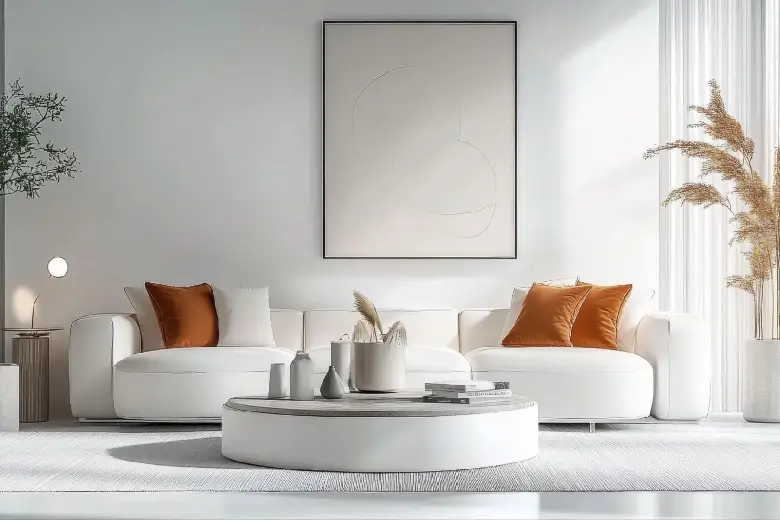
1. Corporate
Often misunderstood as a cold and boring style of design, it’s much more than that. The main goal of corporate interiors is to maximize productivity, professionalism, and clear thinking. These spaces generally feature neutral color schemes (like whites, greys, and blues), clean lines, ergonomic furniture, and organized layouts. Think modern offices with glass meeting rooms, adjustable desks, smart lighting, and subtle branding elements.
2. Industrial
Industrial design is raw and inspired by old warehouses, factories, and urban environments. This style prides the ‘unfinished’ look with exposed brick walls, visible ductwork, exposed metal beams, and rough concrete floors. Many modern cafés, co-working spaces, and tech startups prefer this style because it feels real, powerful, and sometimes rebellious.
3. Luxe
Luxe design creates a sense of luxury and exclusivity. It features marble floors, velvet upholstery, rich wood surfaces, gold finishes, and cinematic lighting. This style is commonly executed at high-end boutiques, fine-dining restaurants, luxury salons, or hotel lobbies that want to signal prosperity and sophistication.
4. Minimalist
Minimalism focuses on ‘less is more’; featuring clean lines, neutral colors, and furniture that prioritizes form and function over aesthetics. Everything has a purpose, and there’s no clutter. This style is especially popular in modern offices, wellness clinics, and lifestyle brands that want to signal clarity, calmness, and focus.
5. Boho
Boho (short for bohemian) design is creative, colorful, laid-back, and has personality. It uses natural materials, handmade decor, colorful textiles, plants, and mismatched furniture to create a lived-in feel. It’s commonly seen in cafes, boutique stores, or spaces that want to give off a warm and welcoming vibe.
6. Bauhaus
Bauhaus design comes from a famous German design school in the early 20th century, and is somewhat similar to minimalist design; it also speaks about function and form. In Bauhaus interiors, you’ll see clean geometry and simple shapes. The colors are often bold (reds, yellows, blues) mixed with black and white. It’s a common style in creative workspaces, studios, and educational environments.
Common Challenges and Solutions
There is no doubt that creativity is a huge part of the process, but commercial interior designers also face real-world problems that need practical solutions. Here are some common challenges and how designers in this niche usually solve them.
1. Budget Constraints
Clients often want high-end materials, custom furniture, or elaborate layouts, but they may not have the funds to support them. Designers handle this by carefully deciding where to splurge and where to save. For instance, investing in quality flooring (which sees a lot of wear and tear) might take priority over decorative elements that can be updated later.
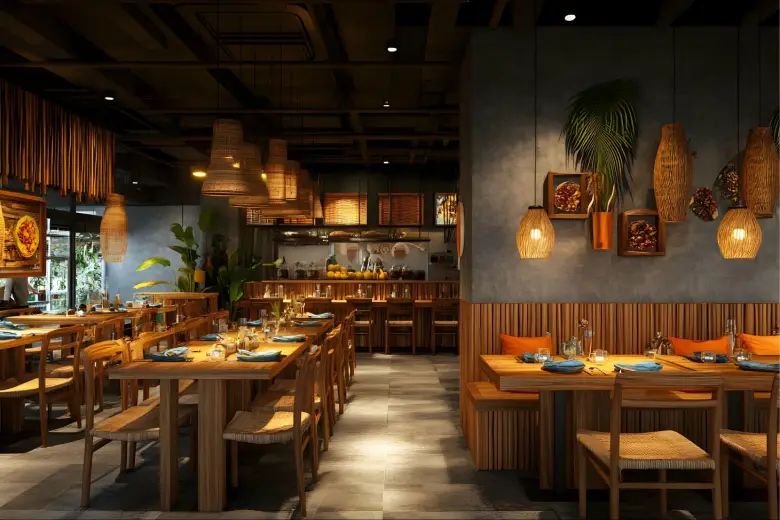
2. Tight Deadlines
Delays mean lost revenue, so designers have to work fast without compromising on quality. This requires a lot of coordination, clear communication, and a strong network of contractors and vendors. Pre-ordering materials, extensive planning in the initial phases, and setting realistic milestones are some of the ways designers keep things on track.
3. Limited Space
Urban commercial properties are always expensive and if they are small too, designers have to figure out how to make the most of every inch. This means smart space planning and multi-functional furniture. Mirrors, light colors, and open shelving can also make a tight space feel more open.
Future Trends in Commercial Interior Design
Post-COVID, design in general has been moving in the direction of human-centered experiences and incorporating nature-themed artifacts in spaces. There are similar trends and directions that commercial design can take in the coming year. Let’s take a look.
1. Wood Architecture
The wood architecture is getting popular again. It is a sort of contemporary arts and crafts sentiment that appreciates artisanal work in the woodworking department. Wood is a timeless, and fairly durable material that can give warm and cozy aesthetics to a space.
2. Sustainability Becomes Standard
Increasingly, commercial spaces are leaning into sustainable interior design practices and incorporating materials like bamboo, recycled wood, low-VOC paints, and energy-efficient lighting. Green certifications like LEED are also gaining importance.
3. Vintage Lighting
The Gen-Zs are whipping out lamp designs from the 70s (umbrella-like shade) and giving them a new spin. A lot of it is coming from ‘thrift hauls’ and repurposing discarded vintage lamps. This ‘evolved from the 70s but new lighting’ will be a theme for a while.
4. Broken Floor Plans
There was a 7-10 year long stint of open floor planning and it is going away. The broken floor plan which uses partial dividers, furniture placement, or glass partitions to gently separate areas without fully enclosing them, is making a comeback.
Final Thoughts
With that, we have looked at all the major aspects of commercial interior design. Remember, when it comes to corporate and retail commercial spaces, it is primarily about Purpose and/or Experience. In a way, commercial interior design falls under the category of ‘business problems’ and requires more methodic and first principles thinking. Mastering it means understanding not just design, but also people, brands, and the evolving work and retail cultures.
FAQs
Q1. What do commercial interior design jobs typically involve?
Commercial interior design jobs involve designing spaces that serve business goals—like offices, restaurants, and stores.
Q2. What is the average commercial interior designer’s salary?
On average, entry-level designers might earn between $35,000–$50,000 annually, while experienced professionals or those in large firms can earn upwards of $80,000–$100,000 per year or more.
Q3. Can a commercial interior have more than one design style?
Absolutely. Many commercial interiors mix styles to reflect complex brand identities. For instance, a coworking space might put together industrial and boho styles to create a serious yet relaxed environment.
Q4. Why is sustainability important in commercial interiors?
Eco-friendly materials and energy-efficient systems reduce operational costs, meet regulatory standards, and appeal to environmentally conscious consumers. That’s why.
For more blogs on interior design, visit the AND Academy blog. You can also explore this inspiring project by AND learner Sunali Khajuria.
Next Steps
In case you need further assistance, here are some resources to consider:
- Watch this session by Snehanshu Mukherjee, Founding Partner at T.E.A.M and Mansi Almadi, an Interior Designer at Studio Lotus
- Talk to a course advisor to discuss how you can transform your career with one of our courses.
- Check out our Interior Design courses – all courses are taught through live, interactive classes by industry experts.
- Take advantage of our scholarship and funding options to overcome any financial hurdle on the path of your career transformation.
Note: All information and/or data from external sources is believed to be accurate as of the date of publication.

